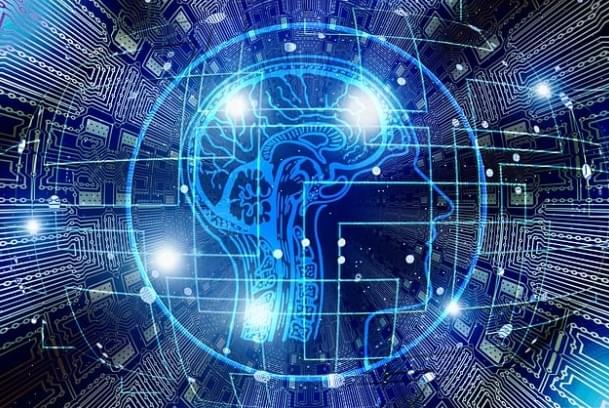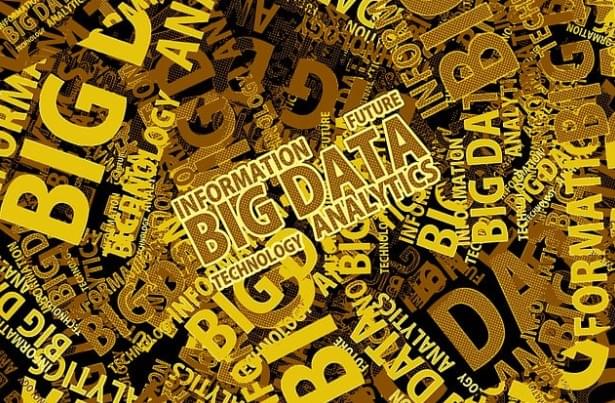Artificial Intelligence (AI) has become a buzzword in recent years, revolutionizing various aspects of daily life. One area where AI has made significant advancements is in decision-making, particularly with data collection. Understanding the basics of AI and its evolution is crucial to comprehending its impact on decision-making processes.

Understanding the Basics of Artificial Intelligence
Artificial Intelligence refers to the simulation of human intelligence in machines that are programmed to think and learn like humans. It involves the development of computer systems capable of performing tasks that typically require human intelligence, such as speech recognition, problem-solving, and decision-making.
AI has come a long way since its inception. Initially, AI focused on imitating human logic and reasoning. However, advancements in machine learning and deep learning have enabled AI systems to learn from vast amounts of data and improve their performance over time.
Artificial Intelligence has revolutionized various industries, including healthcare, finance, and transportation. In healthcare, AI-powered systems can analyze medical images, detect diseases, and assist in diagnosing patients. AI algorithms can analyze market trends, predict stock prices, and automate trading in finance. In transportation, AI is being used to develop self-driving cars and optimize traffic flow.
The Evolution of Artificial Intelligence
The field of AI dates back to the 1950s when researchers began exploring the idea of creating machines that could mimic human intelligence. Over the years, AI has evolved from simple rule-based systems to more sophisticated neural networks and deep learning models.
The early days of AI were marked by optimism and high expectations. Researchers believed that general artificial intelligence, which could perform any intellectual task that a human being can do, was just around the corner. However, as the complexity of AI tasks became apparent, progress slowed down, and AI entered a period known as the “AI winter.”
But with the advent of machine learning and the availability of large datasets, AI research regained momentum. Machine learning algorithms, such as neural networks, revolutionized AI by enabling computers to learn from data and improve their performance without being explicitly programmed. Developments in AI have been fueled by the exponential growth of computing power, the availability of big data, and improvements in algorithms. These advancements have paved the way for AI to transform decision-making processes.
Today, AI is being used in various applications, from virtual assistants like Siri and Alexa to recommendation systems like those used by Netflix and Amazon. AI is also being used in scientific research, such as drug discovery and climate modeling.
Key Components of Artificial Intelligence
Artificial Intelligence comprises various components that work together to enable intelligent decision-making. These components include machine learning algorithms, natural language processing, computer vision, and robotics.
Machine learning algorithms allow AI systems to learn from data and make predictions or take actions without being explicitly programmed. They enable computers to recognize patterns, classify data, and make decisions based on past experiences.
Natural language processing enables AI to understand and generate human language, enabling more natural interactions between humans and machines. This technology is used in chatbots, virtual assistants, and voice recognition systems.
Computer vision enables AI systems to analyze and interpret visual data, opening up new possibilities for decision-making. Computer vision algorithms can detect objects, recognize faces, and analyze images or videos. This technology is used in autonomous vehicles, surveillance systems, and medical imaging.
Robotics integrates AI with physical systems, allowing machines to perform tasks in the physical world. Robots equipped with AI can navigate their environment, manipulate objects, and interact with humans. Robotics has applications in manufacturing, healthcare, and space exploration.
In conclusion, Artificial Intelligence has evolved significantly over the years, thanks to advancements in machine learning, computing power, and data availability. It has revolutionized various industries and potentially transformed many aspects of our lives. With ongoing research and development, AI will continue to push the boundaries of what machines can achieve.

The Role of Data Collection in Decision Making
Data collection plays a critical role in the decision-making process, providing valuable insights to inform strategic choices. With the advent of AI, the importance of data has become even more pronounced, as AI systems rely on comprehensive and diverse datasets to generate meaningful results.
When it comes to decision-making, having access to accurate and relevant data is crucial. Data collection enables organizations to gather information from various sources, such as customer interactions, social media, and sensor data. This vast amount of data holds immense potential for uncovering patterns, trends, and new opportunities.
Today’s business landscape forces organizations to understand the importance of data in gaining a competitive edge. They invest in robust data collection processes to ensure they have the necessary inputs for AI systems to generate valuable insights.
Importance of Data in Modern Business
Organizations rely on data to drive their decision-making processes in this fast-paced and highly competitive business environment. The availability of high-quality data allows them to make informed choices, identify market trends, and gain a deeper understanding of their customer’s needs and preferences.
Data collection is not limited to just one industry or sector. It is crucial in various fields, such as healthcare, finance, marketing, and manufacturing. Moreover, data collection enables organizations to measure the effectiveness of their strategies and initiatives. By analyzing data, they can identify areas of improvement, optimize their operations, and make data-driven decisions that align with their organizational goals.
Traditional Methods of Data Collection
Traditionally, data collection involved manual processes like surveys, interviews, and observation. While these methods still have their merits, they are time-consuming, costly, and prone to human error.
Surveys, for instance, require significant resources to design, distribute, and analyze. They also rely on participants’ willingness to provide accurate and honest responses, which may not always be the case. Similarly, interviews and observations are limited by the number of individuals or cases that can be studied, making it challenging to generalize the findings to a larger population.
However, the emergence of AI has revolutionized data collection methods, allowing organizations to leverage automation and advanced analytics to gather and analyze data more efficiently. AI-powered data collection tools can automatically extract relevant information from large datasets, saving time and resources. Machine learning algorithms can also identify patterns and trends in the data, providing organizations with valuable insights that were previously difficult to uncover manually.
Furthermore, AI systems can continuously learn and adapt, improving the accuracy and reliability of data collection over time. This enables organizations to make more informed decisions based on up-to-date and accurate information.
The Intersection of Artificial Intelligence and Data Collection
AI and data collection have become interconnected, with AI enhancing the process of gathering and analyzing data for decision-making purposes.
How AI Enhances Data Collection
AI technologies, such as machine learning, have the ability to process and analyze massive amounts of data at scale. By applying algorithms to raw data, AI systems can identify patterns, detect anomalies, and extract valuable insights that might have been overlooked using traditional methods.
Furthermore, AI can automate data collection processes by utilizing technologies like web scraping, natural language processing, and image recognition. These AI-driven automation techniques expedite the data collection process and reduce the risk of human error.
Impact of AI-Driven Data Collection on Decision Making
The integration of AI and data collection has profound implications for decision-making processes, offering several advantages over traditional approaches.
Improving Accuracy in Decision Making
AI systems leverage vast amounts of data to make data-driven decisions with higher accuracy. By analyzing patterns and trends, AI can identify hidden insights and make predictions that humans might miss. This enhanced accuracy empowers decision-makers to make informed choices and minimize potential risks.
Speeding up the Decision-Making Process
AI-driven data collection significantly accelerates the decision-making process. Organizations can obtain timely insights by automating data collection and analysis, enabling them to respond quickly to changing market conditions. This increased speed allows businesses to gain a competitive edge and seize opportunities before their competitors.
Future Trends in AI and Data Collection
The future holds exciting prospects for the intersection of AI and data collection, with several trends poised to shape the field.
Predicted Developments in AI Technology
AI technology is expected to advance rapidly, enabling more complex and nuanced decision-making capabilities. The emergence of explainable AI, which provides transparency into the decision-making process, will be particularly significant in highly regulated industries.
Additionally, AI systems will become more adept at handling unstructured data, such as images, audio, and video, further expanding the data collection and analysis scope.
The Future of Decision-Making with AI and Data Collection
As AI and data collection continue to evolve, decision-making processes will become increasingly efficient and effective. AI-driven insights will augment human decision-making, allowing organizations to harness the power of data to make strategic choices, innovate, and achieve their goals.
In conclusion, the fusion of artificial intelligence and data collection is fundamentally reshaping decision-making processes. Organizations can harness the full potential of this transformative technology by understanding the basics of AI, recognizing the importance of data collection, and exploring the impact of AI-driven data analysis. The future promises exciting developments, paving the way for more accurate, speedy, and intelligent decision-making. Learn more about data protection and security measures with PPGS ™. They are experts in online privacy issues and internet safety.
